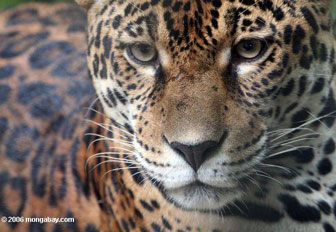Bush Administration moves to weaken endangered speices protection
Bush Administration moves to weaken endangered speices protection by invoking new rationale
Jeremy Hance, mongabay.com
July 31, 2008
Pygmy owl facing extinction after being de-listed from the Endangered Species Act. New rationale allows administration to decline several species protection.
The Bush administration’s handling of the Endangered Species Act has put the cactus ferruginous pygmy owl in danger of extinction, according to the Centre for Biological Diversity. Even though less than 30 individuals exist in the United States—all in Arizona—the species was removed from the Endangered Species Act in 2006, after nine years of protection.
The Bush Administration argued that because a larger population of the cactus ferruginous pygmy owl existed in Mexico, the owl didn’t require listing. The same rationale was used in not listing the wolverine as endangered: in that case the Bush administration stated that a viable population lives in Canada making listing unnecessary. There are currently less than 500 wolverines in the US and their numbers are dropping.
But now the population of pygmy owls Mexico is under threat, putting this species at risk of extinction. Researchers have found that the population in Northern Mexico has declined by 26 percent since 2000. Mexico has few protections for endangered species, and much of the owl’s habitat is being turned into cattle pasture. In Arizona urban-sprawl has destroyed most of the owl’s habitat, and with the de-listing in 2006 areas of habitat have been opened to development. Climate change may pose a threat, as well, since studies have shown that the owls produce less young in dry years.
“The combination of habitat destruction and climate change may be the nail in the coffin for the cactus ferruginous pygmy owl in the Sonoran Desert,” said Noah Greenwald, director of science at the Centre for Biological Diversity.
 Photo by R. Butler |
The Bush administration is the first to claim that populations outside of the United States allow the government to de-list or not protect a threatened species. The cactus ferruginous pygmy owl and the wolverine are not alone; the same reasoning was cited in refusing coverage to the Montana fluvial arctic grayling and the Mexican garter snake, as well as in abandoning plans to promote jaguar recovery in the United States. The jaguar’s historic range used to span the Southwest, from Southern California to Western Texas. Currently, a few jaguars have been known to cross from Mexico into the U.S., though the border fence will probably put a stop to that.
Ten environmental groups are in the process of suing the Administration, saying that this new rationale goes against the meaning and purpose of the Endangered Species Act.













